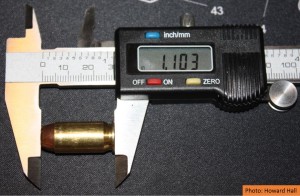
One of the Americans involved in thwarting the attack was quoted as saying “Do something! Once I started moving, all the fear left me” or something to that effect as I have seen about four different variations of his exact “quote”. There is actually a biological basis for his feeling. The body has a natural programmed response of the autonomic nervous system in response to stressors frequently referred to as the fight or flight response.

We aren’t going to get into the physiology of fight or flight but the impact of this chemical cocktail on the body is decreased sensitivity to pain and increased muscular performance which can be used to fight or run, or anything else we choose to do with it. Many on the train choose to sit and stare, others to hide or run, but only a handful to fight. The biological response to stressors is pretty standard across the human species. In the case of this attack, everyone who was aware of the situation was most likely physically primed to act, but the decision to act aggressively, and solve the problem, was only made by six.
The primary driver of what we decide to do with our genetic abilities and limitations is based on our environmental or cultural influences and is less influenced by genetics. In fact, you can condition people to be more or less prone to act through training. That is exactly what the training for military and some law enforcement personnel entails. It is called by a number of terms, but a bias for aggressive action is an apt description of the end goal of military training programs.
We do this by placing candidates in stressful situations and critiquing their response. One common principle in elite units is that bad decisions are not great and good decisions are preferred, but a lack of decision and action is a reason to be removed from the the unit. The bottom line is that a bad decision may result in a catastrophe, but no decision places you at the whim of the attacker, which will result in a catastrophe every time. Some combination of positive and negative reinforcement is used to instill a bias for doing something aggressive in the face of negative stress.
Many Americans respond well to this sort of training because it is in fact quite similar to what they are culturally used to. Conversely, most of the Arab militaries I have worked with do not have the cultural ability to act with out direct instruction and intense supervision. This is not, as far as we know a genetic limitation as there is no “bias for action” gene that we are aware of. There are certainly examples of Arabs who can learn to function in this type of environment, and many Arab Americans who serve in elite American military and intelligence assignments very successful. This further leads us to the conclusion that it is not a genetic limitation, which means it is likely environmentally induced.
Anyone who has worked with a nations military that comes from a culture of dependance will tell you how very different it is to working with Americans. You can see the culture of dependance result in an almost innate desire to have some else, anyone else make the decision for them. This delay is grossly ineffective in violent encounters. The question is what are the environmental conditions of American culture that lends itself to producing a predilection to act aggressively in the face of stress? Continue Reading>>
Author ~ Patrick Henry


 Recently, when I conducted this routine, I noticed how the Sig P227 failed to feed the first cartridge into the chamber which jammed the gun out of battery. Whereas a “tap” to the rear of the slide would normally return to the gun into battery, chamber the cartridge, and lock the slide and barrel to the frame, this cartridge was firmly jammed against the barrel’s feed ramp. For a home defense firearm that must be 100% reliable, I found this to be discomforting.
Recently, when I conducted this routine, I noticed how the Sig P227 failed to feed the first cartridge into the chamber which jammed the gun out of battery. Whereas a “tap” to the rear of the slide would normally return to the gun into battery, chamber the cartridge, and lock the slide and barrel to the frame, this cartridge was firmly jammed against the barrel’s feed ramp. For a home defense firearm that must be 100% reliable, I found this to be discomforting. With a digital caliper, I measured the overall length (from the end of the cartridge rim to the leading edge of the projectile) of the ammunition from the box which had not been chambered into the Sig P227 and they measured 1.206 inches. This measurement was consistent with all other un-chambered cartridges.
With a digital caliper, I measured the overall length (from the end of the cartridge rim to the leading edge of the projectile) of the ammunition from the box which had not been chambered into the Sig P227 and they measured 1.206 inches. This measurement was consistent with all other un-chambered cartridges.